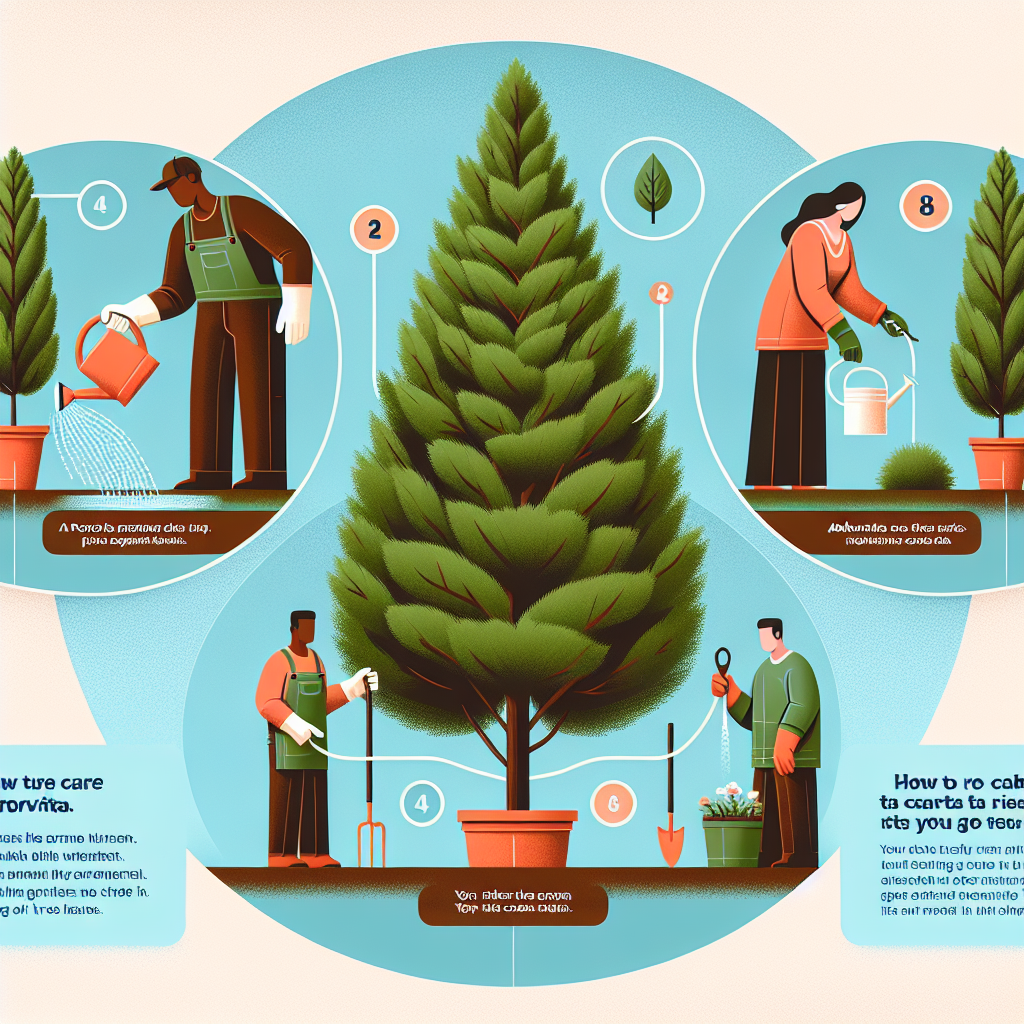
How to care for arborvitae
How to Care for Arborvitae: A Comprehensive Guide
Arborvitae, often recognized as a staple in landscape design, plays a vital role in providing privacy and aesthetic appeal. Understanding how to care for arborvitae is essential for keeping these hardy evergreens healthy and vibrant. In this article, we will delve into the key aspects of arborvitae care, including watering, fertilizing, pruning, and pest management, to ensure you maintain a stunning backdrop for your outdoor space.
Understanding Arborvitae
Before diving into care practices, it's important to understand what arborvitae is. Arborvitae, belonging to the Thuja genus, includes several species, with *Thuja occidentalis* being one of the most common. Known as eastern arborvitae or northern white cedar, this plant is appreciated for its conical shape, lush green foliage, and ability to thrive in various climates.
Arborvitae are often used for privacy hedges, borders, or stand-alone specimens in gardens. They are relatively low-maintenance but require specific care to achieve optimal growth and appearance. Let’s explore the essential elements of caring for these evergreen beauties.
Planting Arborvitae
Proper planting lays the foundation for successful arborvitae growth. Consider the following when planting:
- Location: Choose a planting location with full sun to partial shade. Arborvitae thrive in well-drained soil.
- Soil Quality: Test your soil's pH; arborvitae prefer slightly acidic to neutral soil (pH 6.0 to 7.0).
- Spacing: If planting multiple trees, ensure they are spaced adequately based on their mature width, typically 2 to 4 feet apart.
- Time of Year: The best time to plant arborvitae is in early spring or fall when temperatures are cooler.
Watering Your Arborvitae
Watering is critical for the establishment and ongoing health of arborvitae trees. Here are key watering guidelines:
- Newly Planted Trees: Water deeply once a week for the first growing season to promote root establishment.
- Established Trees: Once established, arborvitae require less frequent watering. However, during prolonged dry spells, provide extra moisture.
- Check Moisture Levels: Use your finger to check the top 2-3 inches of soil; if it's dry, it's time to water.
Fertilizing Arborvitae
Fertilization supports growth and keeps your arborvitae vibrant. Use the following tips for effective fertilization:
- Type of Fertilizer: An all-purpose, slow-release fertilizer works best. Look for one that is balanced, such as 10-10-10 or 18-6-12.
- Timing: Fertilize in early spring as new growth emerges, and again in late spring or early summer if necessary.
- Application: Follow the package instructions, making sure to spread the fertilizer evenly around the root zone.
Pruning Arborvitae
Regular pruning helps maintain the shape and health of your arborvitae. Keep these pruning tips in mind:
- When to Prune: The best time to prune is late winter or early spring before new growth begins.
- How Much to Prune: Avoid cutting into the old wood; 1/3 of the branch length is a safe limit to maintain healthy foliage.
- Tools Needed: Use sharp, clean pruning shears or loppers to ensure a clean cut and reduce the risk of disease.
Pest and Disease Management
Being proactive with pest and disease management is essential for the health of arborvitae. Here are some pointers:
- Common Pests: Watch for spider mites, bagworms, and aphids. Regular inspections help in early detection.
- Signs of Trouble: Yellowing foliage, webbing between branches, or visible insects are indicators of pest problems.
- Disease Management: Fungal diseases, such as root rot, can pose threats. Ensure proper drainage and avoid watering too often to mitigate these risks.
Seasonal Care Tips
Different seasons necessitate unique care strategies for arborvitae:
Spring Care
- Check for winter damage and prune dead or damaged branches.
- Fertilize as new growth begins.
- Mulch around the base for moisture retention and weed prevention.
Summer Care
- Monitor for pests and diseases regularly.
- Water consistently during periods of heat or drought.
- Maintain lateral growth by lightly pruning if necessary.
Fall Care
- Protect against winter wind damage by wrapping trees or providing windbreaks.
- Continue watering until the ground freezes to ensure healthy roots.
- Apply a layer of mulch to insulate roots during colder months.
Winter Care
- If in a snowy region, gently shake excess snow off branches to prevent breakage.
- Keep an eye out for any deer browsing or rodent activity, as they may use the snow for access to lower parts of the trees.
“With the right care and attention, arborvitae can serve as a beautiful, green backdrop for many years to come.” - Garden Expert
Common Arborvitae Varieties
Understanding the specific needs of different arborvitae varieties can enhance your care. Here are a few popular types:
| Variety | Height | Spread | Care Tips |
|---|---|---|---|
| Western Red Cedar (*Thuja plicata*) | 50-70 ft | 15-30 ft | Requires regular watering, prefers cool, moist soils. |
| Northern White Cedar (*Thuja occidentalis*) | 30-50 ft | 10-20 ft | Thrives in colder regions, beneficial for privacy hedges. |
| Emerald Green Arborvitae (*Thuja occidentalis 'Smaragd')* | 10-15 ft | 3-4 ft | Compact growth, ideal for smaller spaces or hedges. |
Conclusion
Caring for your arborvitae doesn't have to be overwhelming. By understanding how to care for arborvitae properly—through appropriate planting, watering, fertilizing, pruning, and pest management—you can ensure a thriving and beautiful addition to your landscape. Whether you are planting new trees or maintaining existing ones, consistent care and vigilance will reward you with healthy, lush green that brings beauty and privacy to your outdoor space for years to come.
With the right knowledge and effort, your arborvitae will flourish, creating the desired ambiance in your garden. Remember, a vibrant landscape is a reflection of the care and effort you invest in it. Happy gardening!
By Guest, Published on October 20th, 2024